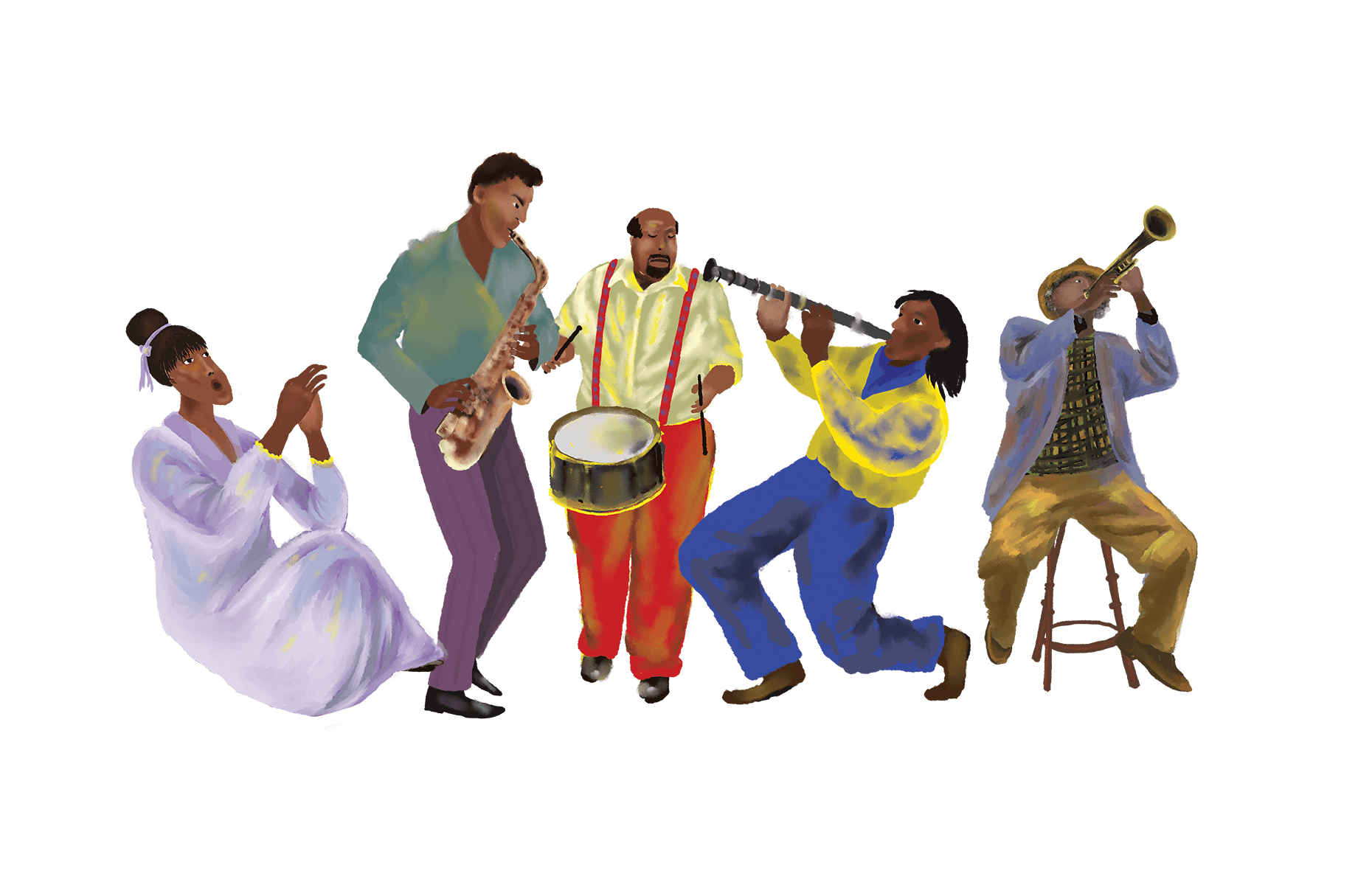In an age of antiseptic Hottest 100 tunes, progressive electronic soundscapes and Tiktok bedroom pop, it’s unsurprising that we’re quick to pronounce the death of jazz. In Damian Chazelle’s sparkling ode to dreams, La La Land (2016), we follow a pianist’s journey to revive the golden age of swinging trios and big bands. Though the film has been rightfully criticised for portraying a reductive, nostalgic version of a genre that has since progressed, there is some truth in its characterisation of jazz in the mainstream. When it is mentioned, people often think of cocktail bars, suburban white middle-class living rooms and Kenny G — it is often music that drifts along in the background. Despite its current status, jazz was once at the forefront of musical innovation and its history is not only a tale of brilliance but one of beauty and struggle.
Jazz is a spontaneous artform. It is the expression of years of craftsmanship and learning, all in a flurry of unexpected note choices and unorthodox rhythms. However, it is also a music of care. To repeat an oft-quoted phrase, the great Miles Davis once said, “It’s not the notes you play, it’s the notes you don’t play.” It is a sophisticated genre which requires a deep understanding of chord structures and rhythmic patterns in order to produce lines on the fly and bounce off other musicians. In part, the complexity of the music has created a sense of elitism around the genre. However, these connotations were only created when the genre was adopted by the white middle-class and integrated into a fundamentally classist and racist education system.
New Orleans, Louisiana, is widely accepted as the birthplace of jazz.After slavery was abolished in 1865, African Americans were able to exercise their new but limited freedoms and express that through music. The city was markedly multicultural and was a melting pot of cultural expression. Ultimately, jazz is Black music, and the genre was born out of West African musical traditions which predated colonialism. For instance, the strong tradition of rhythm and performance that West Africans had was reflected in their call and response format. Unlike music in the “West” and European countries, there was an integration of audience and performer, with a strong focus on spontaneity. All these elements define jazz as we know it, as musicians draw from one another’s ideas in the instant that they are expressed.
Despite this rich history of African modes of musical and creative expression, the genre only took to the mainstream when white musicians began to play the music and adopt it, more or less, as their own. Much like how Elvis Presley became the face of rock and roll, the first jazz record was issued in 1917 by the Original Dixieland Jazz Band, who were, unsurprisingly, all white. This is rather ironic, considering that jazz was derided as the “devil’s music”, with blatantly racist critics arguing,“Why ‘Jazz’ sends us back to the Jungle”. This legacy of racism remains entrenched within the music industry with the stigma surrounding hip-hop, with conservative figures like Ben Shapiro making absurd claims that “rap isn’t music”. Despite these dehumanising attitudes, Black musicians were able to flourish through their creative genius. Louis Armstrong ushered in the era of soloists who were masters of improvisation, and Duke Ellington expressed the genre through orchestras and big bands. In the mid 1900s, the genre found new articulations through the hard and fast style of bebop and the more meditative and complex medium of modal jazz. Jazz was, and continues to be, about pushing boundaries and breaking the mould.
Now, there are innumerable offshoots of the genre as it has merged and synthesised with other styles of music. Though the public’s understanding of jazz is quite narrow, its influence surrounds us. For instance, hip-hop itself is defined by a focus on rhythm and groove, with modern-day pianist Robert Glasper calling jazz – “the mother of hip hop”. Closer to home, the Lo-fi playlists that millions of people study or relax to are filled with samples of classic jazz pieces, and can be considered a more digestible form of the genre. Whether we believe it or not, jazz is living and breathing, and we ought to honour its birth as a dazzling tale of Black liberation.





